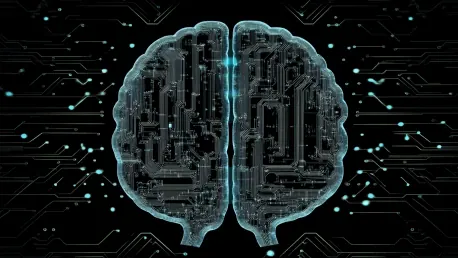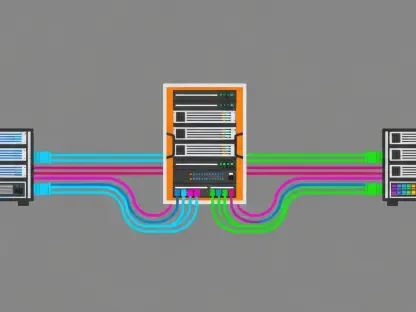The integration of open-source artificial intelligence (AI) frameworks with the Internet of Things (IoT) is revolutionizing the way devices operate, making them smarter, faster, and more efficient. This fusion has paved the way for transformative advancements across various industries, leveraging data and analytics to facilitate real-time decision-making and automation. As connected devices proliferate in homes, cities, and industrial environments, the role of AI becomes increasingly critical in managing the vast amounts of data generated. By employing open-source AI frameworks, developers can capitalize on community-driven innovations and contribute to an ecosystem that continually evolves and improves.
Understanding Open Source AI and IoT
The Internet of Things (IoT) represents a network of interconnected physical devices equipped with sensors, software, and other technologies. These devices collect, exchange, and act on data over the internet, offering seamless automation and efficiency. AI enhances IoT by making these devices smarter and more capable of learning, predicting, and adapting to users’ needs. For instance, in a smart home, AI enables devices like thermostats and security cameras to offer personalized and efficient solutions without manual intervention.
An open-source AI framework is a publicly accessible software library or tool that assists developers in building, training, and deploying AI models. These frameworks are essential in IoT for several reasons. They provide pre-built algorithms that save developers significant time and effort, allowing them to focus on more critical tasks. The customizable nature of these frameworks means they can be tailored to specific needs, which is particularly beneficial in a field as diverse as IoT. Furthermore, community collaboration ensures continuous improvement and support, making these frameworks reliable and robust. The cost-effectiveness of open-source frameworks also lowers barriers to AI development, enabling even small businesses and startups to adopt and innovate with cutting-edge technologies.
The interoperability of open-source AI frameworks is another crucial factor for IoT development. Seamless integration across different devices and platforms ensures that the entire system functions cohesively. This interoperability fosters an environment where IoT devices can communicate effectively, share data, and perform coordinated actions, further enhancing their efficiency and effectiveness.
Key Open Source AI Frameworks
TensorFlow Lite
TensorFlow Lite is a popular open-source AI framework designed to enable AI processing directly on edge devices, reducing cloud dependency. It uses advanced techniques like quantization and pruning to minimize model size and improve efficiency. TensorFlow Lite is compatible with various devices, including Android, iOS, and microcontroller-based hardware, and supports GPUs and specialized AI chips for improved performance.
However, converting large TensorFlow models to TensorFlow Lite can be complex, potentially causing a loss of accuracy. It struggles with larger, complex models requiring significant computational resources, and some IoT devices may require custom optimizations, adding to development time and complexity. Achieving optimal performance on different devices necessitates specific knowledge of hardware and model tuning.
TinyML
TinyML is designed for ultra-low-power devices, facilitating AI in battery-operated IoT devices. It enables real-time data processing and decision-making without cloud dependency, providing improved privacy and security by processing data at the edge. TinyML makes AI features available on low-cost microcontrollers and IoT devices.
However, TinyML has limitations in model complexity and simplified models, making it unsuitable for complex AI tasks. Memory and storage constraints restrict the size and complexity of deployable models, and specialized knowledge is required to optimize models for highly constrained devices. Small devices may lack the necessary processing power for sophisticated AI models.
Keras
Keras simplifies the design, training, and testing of neural networks with minimal coding. It offers seamless integration with TensorFlow, providing enhanced capabilities and tools. Keras provides access to a wide variety of pre-trained models for rapid deployment and is supported by a large open-source community with numerous resources and tutorials.
Despite its strengths, Keras’s higher-level abstractions may not offer the necessary control for highly customized solutions. It requires significant computational power, limiting its use in constrained devices. Running Keras models on constrained devices can lead to performance issues, and it is not optimized for the smallest IoT devices and edge computing needs.
Edge Impulse
Edge Impulse offers tools for data collection, model training, and deployment to edge devices. It is tailored for battery-powered IoT devices with low-power optimized models, facilitating real-time AI processing directly on edge devices. Edge Impulse is designed to be user-friendly, even for those without deep AI expertise.
However, pre-built solutions may lack flexibility for highly customized needs. Edge Impulse is optimized for specific hardware, requiring custom tuning for unsupported devices. It lacks some advanced machine learning capabilities compared to other frameworks like TensorFlow and is best suited for specific platforms, making customization complex for others.
Apache MXNet
Apache MXNet can handle both small IoT devices and large cloud systems. It supports multiple languages and backends, including Python, Scala, and Julia, and utilizes GPU acceleration for faster model training and inference. Backed by a large open-source community, MXNet ensures consistent contributions.
However, MXNet requires a deeper understanding of deep learning concepts for effective use. Sparse documentation for advanced features can hinder development, and it is not as straightforward to integrate with smaller, constrained devices as lighter frameworks. While flexible, it is not specifically tailored to IoT device constraints.
OpenCV (Open Source Computer Vision Library)
OpenCV is optimized for real-time computer vision tasks like object detection and facial recognition. It offers a wide range of tools for image and video processing and works on multiple platforms, including Android, iOS, Linux, and Windows. OpenCV supports feature extraction, object detection, motion tracking, and more.
However, OpenCV requires extensive setup and configuration for different hardware platforms. It lacks features for deep learning and complex model training compared to other frameworks and can be resource-heavy on low-power devices when processing high-resolution images. OpenCV is not as optimized for mobile or embedded systems as some other frameworks, which can be a limiting factor in certain IoT applications.
Challenges in Integrating Open Source AI with IoT
The integration of open-source AI with IoT presents several challenges. One major concern is security; handling sensitive data increases the risk of data breaches if the communication channels and storage units are not properly secured. Managing large IoT networks powered by AI requires substantial infrastructure and computational resources that may be costly and complex to implement. Moreover, many IoT devices have limited processing power, which can complicate the deployment of complex AI models, often necessitating significant optimization.
Compatibility issues also arise due to the diverse protocols and standards used by various IoT devices. Ensuring seamless communication and integration among these devices can be difficult, requiring extensive customization. Additionally, maintaining the accuracy and relevancy of AI models over time is challenging. Regular updates and refinements are essential to adapt to new data inputs and changing environments, which can be resource-intensive.
Real-time processing is another critical aspect, especially for applications requiring instantaneous responses. AI processing, particularly deep learning, may introduce delays unacceptable for real-time applications, such as autonomous driving or remote surgery. Furthermore, while open-source AI frameworks are free, the supporting infrastructure and energy consumption costs can be prohibitive. Expertise in successfully integrating AI with IoT is also essential, and open-source tools may lack formal support resources, adding to the complexity.
Use Cases for Open Source AI in IoT
Open-source AI frameworks enable various IoT applications. In smart cities, AI-powered IoT devices manage traffic flow, reduce energy consumption, and enhance public safety through predictive analytics and real-time data processing. For instance, intelligent traffic systems can analyze data from sensors to optimize traffic signals, reducing congestion and pollution. Street lights equipped with AI algorithms can adjust brightness based on the presence of pedestrians or vehicles, improving energy efficiency.
In supply chain optimization, AI analyzes data from IoT sensors to improve inventory management, predict delivery delays, and optimize logistics operations. Sensors on goods and transportation vehicles collect data on location, temperature, and humidity, which AI algorithms process to predict potential issues and optimize routes. This proactive approach reduces waste, enhances efficiency, and ensures timely deliveries.
Autonomous vehicles are another significant application, where IoT sensors rely on open-source AI for navigation, collision avoidance, and route optimization. These vehicles use data collected from cameras, lidar, and radar sensors to make split-second decisions. Open-source AI frameworks provide the essential algorithms for processing this data in real-time, ensuring safe and efficient operation.
In healthcare monitoring, wearable IoT devices integrated with AI monitor patient vitals, track health trends, and alert healthcare providers about potential issues. For instance, smartwatches equipped with IoT sensors continuously monitor heart rate, oxygen levels, and physical activity. AI algorithms analyze this data and provide insights or alerts if anomalies are detected, enabling timely medical intervention and personalized health recommendations.
Looking Forward
The combination of open-source artificial intelligence (AI) frameworks with the Internet of Things (IoT) is transforming how devices function, making them smarter, quicker, and more efficient. This partnership has led to groundbreaking advancements in various industries by utilizing data and analytics for real-time decision-making and automation. As interconnected devices become more common in homes, cities, and industrial settings, AI’s role in managing the large volumes of generated data becomes even more vital. Open-source AI frameworks allow developers to benefit from community-driven innovations and actively contribute to an ever-evolving ecosystem. By integrating these AI frameworks into IoT, industries can enhance operational efficiency, improve predictive maintenance, and provide more personalized user experiences.
In smart homes, for instance, AI-powered IoT devices can learn user preferences and habits, thus automating tasks like adjusting the thermostat or managing home security. In smart cities, these technologies can optimize traffic flow, reduce energy consumption, and enhance public safety. Industrial environments benefit from predictive maintenance and improved resource management, which can reduce downtime and increase productivity. By harnessing the power of open-source AI frameworks, developers can push the boundaries of what is possible with IoT, leading to more innovative solutions that adapt to the needs and challenges of our modern world.









